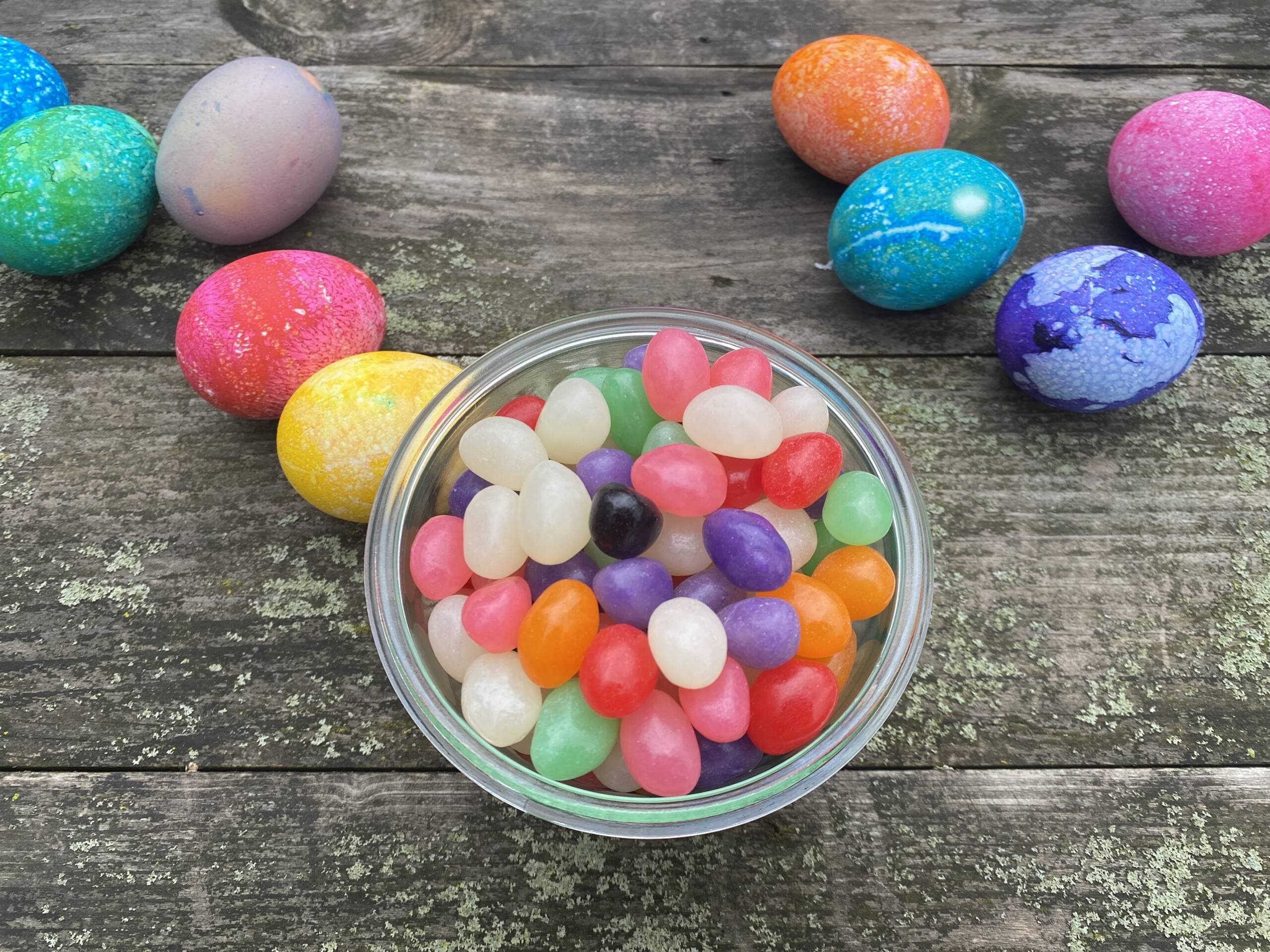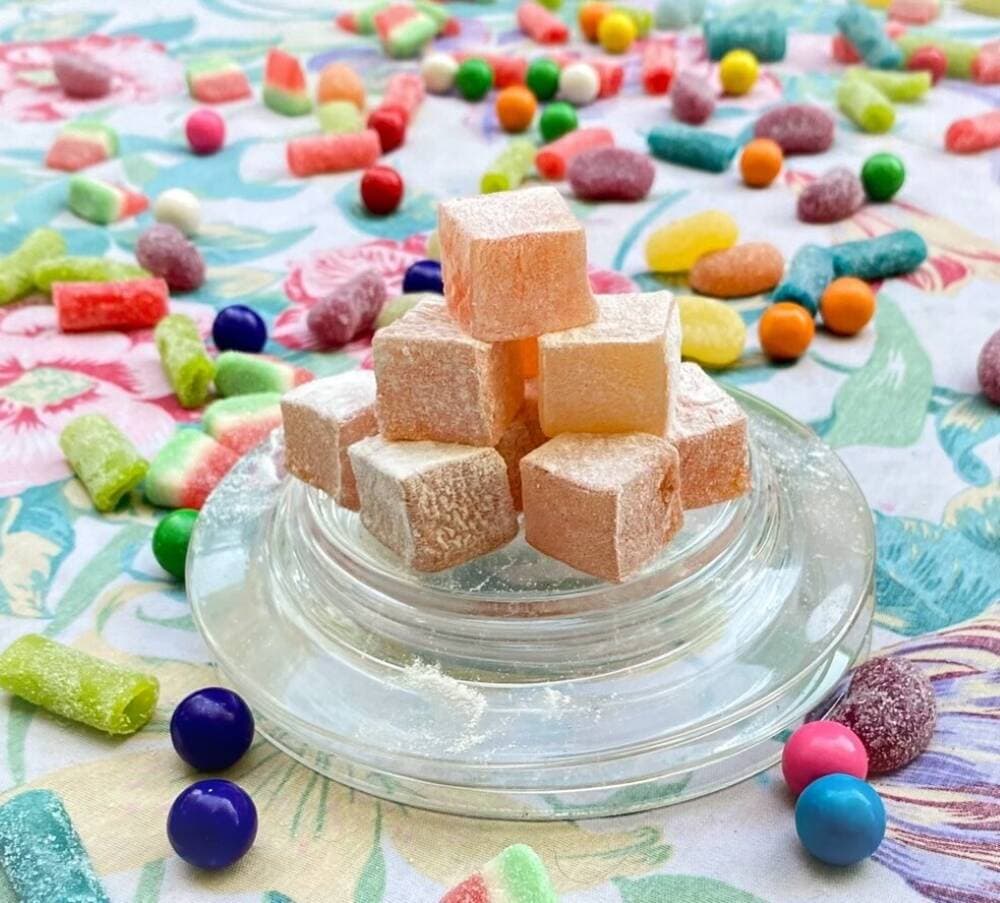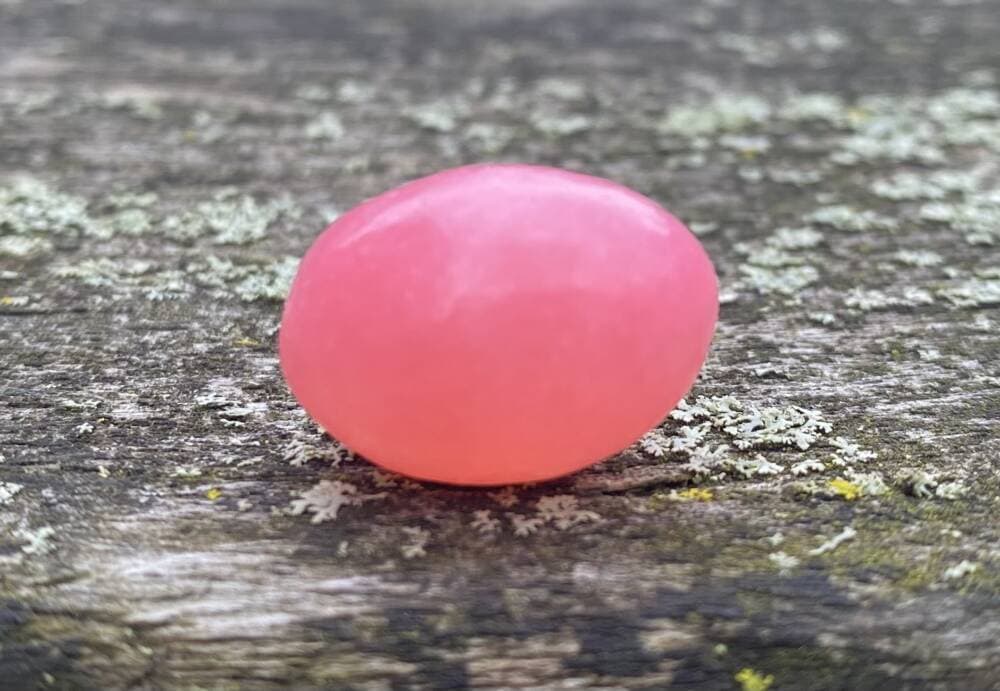Advertisement
Field Guide to Boston
For Easter, a trip back to the jelly bean's history in Boston
Resume
On Easter, countless chocolate bunnies and bright yellow, marshmallow Peeps can be found nestled cozily in many a festive basket. Then there's that humble, but storied, little confection known as the jelly bean. As it turns out, this colorful candy's origins can be traced to Boston. For the holiday, food historian Susan Benjamin was more than happy to hop us back to the beginning.
The jelly bean's origin story
“Every time you eat the jelly bean you're taking a bite of history,” Benjamin said. “It seems the jelly bean began in Boston with a guy named William Schrafft, who had one of the greatest candy making facilities in the country in the late 1800s.”
Schrafft was always experimenting to concoct wondrous chocolates that set the pace for the burgeoning candy industry in the U.S. One of the earliest records of the jelly bean's existence is an advertisement Schrafft used to promote sending jelly beans to Union soldiers during the Civil War. He did that too, Benjamin said. But where did this candy manufacturer come up with the concept for what's become a classic holiday candy?
“He wound up taking something called the Turkish Delight — which actually originated around the year 900 — and created a candy which had a hard sugar shell,” Benjamin said.

People all over the world ate Turkish Delight for centuries. As much as it was a treat, it was also a medicine that helped soothe sore throats. If you've never had or seen one, Benjamin said its profile could best be compared to a jelly bean's squishy middle. “It just had this wonderful, soft, luscious texture, and it was covered with powdered sugar so that the pieces wouldn't stick.”
It's hard to pin down exactly how the Turkish Delight made it to Boston, but Benjamin said it likely traveled over with the wave of people immigrating from Europe, “and they all knew about the Turkish Delight.”
Evolution of the jelly bean
The sweet's exact evolution into the jelly bean is a bit of a mystery, according to Benjamin. But she pointed to a process known as “panning” that began in 17th-century France. “And that's where you take a little seed or nut and add layers and layers of sugar,” she said. The French used this method to make their country's famous candy, Jordan almonds.
So that's how the jelly bean got its crunchy shell. Eventually, the perfectly portable candy made its way into penny candy stores and candy dishes. “The color really made them appealing,” Benjamin said, recalling how her grandmother in Boston always had jelly beans in her glass candy dish. “And the clearer the bowl the better, because they just sparkled.”
As for the jelly bean's shape, its seminal form was both bigger and less bean-like than we see on drug store shelves today. “It was almost like an oval,” Benjamin said.
Then there's the "jelly bean" name. Benjamin said it probably was inspired by a common, old-time phrase that was the opposite of a compliment. “It referred to the kind of guy who was what was known as a 'fop' or a 'dandy' who would show up in pictures all dressed up, arrogant and glamorous in his own eyes,” Benjamin explained. “But the chocolate box he was bringing for his date was open, the chocolate was spilling out, and the petals were falling off the flowers.”
The oblong sweet gained notoriety in the 1920s with a little help from a Ma Rainey song, “Jelly Bean Blues,” and a short story by F. Scott Fitzgerald called "The Jelly-Bean." The writer's feelings about his no-good protagonist quickly become clear in the first two sentences:
“Jim Powell was a Jelly-bean. Much as I desire to make him an appealing character, I feel that it would be unscrupulous to deceive you on that point.”
In the 1930s, Phil Harris sent up the foppish personality in his tune, “Jelly Bean,” with lyrics including, “He's just a curbstone cutie/ His mamma's pride and beauty/ They call him the jelly bean/ Parts his hair in the middle and plasters it down/ Scatters little jelly beans all around town.”
Why jelly beans for Easter?
But when did the jelly bean become a holiday staple? Benjamin said in the 1930s bakers started using the candy to decorate the tops of their cakes. Soon enough, the jelly bean showed up in Easter baskets. “Because it was very spring-like — it looked like a little egg or seed or a bean that would encourage growth,” Benjamin said. “So what do we have as Easter symbols? Flowers, little bunnies hopping around, little chicks, Peeps were around at that time.” And, of course, what else but the jelly bean.

For the people of Boston, where this treat originated, Benjamin recommends eating the jelly bean to celebrate getting through another long, dark winter. “It just tells us spring is here, things will start blooming, and the gray is gone.”
And, she added, you don't have to commit to the jelly bean. It's uncomplicated and manageable. Popping one or two in your mouth should suffice as a means to commune with the remarkable jelly bean's past. “It started as a medicine,” Benjamin said, “and wound up an American treasure.”
Susan Benjamin is a writer and Boston native who owns the history-based candy shop True Treats Candy in Harper's Ferry, West Virginia.

